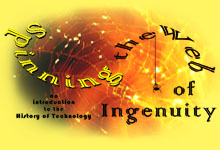
University of California, Irvine
Instructor: Dr. Barbara J. Becker

|
Lecture 13. Shrinking Time
|
|
|
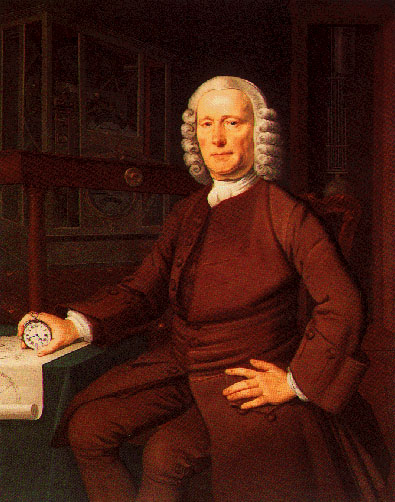
Clockmaker, John Harrison (1693-1776)
| 1693 | born in Yorkshire |
| 1725 | investigated effects of temperature change on expansion and contraction
of metals
used results of experiments to design gridiron pendulum |
| 1726 | completed two "regulators" made of wood, accurate to within one second
per month
|
| 1730 | John Hadley (1682-1744) invented a new altitude-measuring instrument -- the "octant" or "Hadley's quadrant" -- that was accurate to within 3 mins of a degree (~ 3 mi)
|
| 1730 | Harrison met with Astronomer Royal Edmund Halley and noted clockmaker George Graham despite fears Graham would steal his plans. Instead, Harrison gained their support for his plan to build H1. |
| 1735 | H1 completed
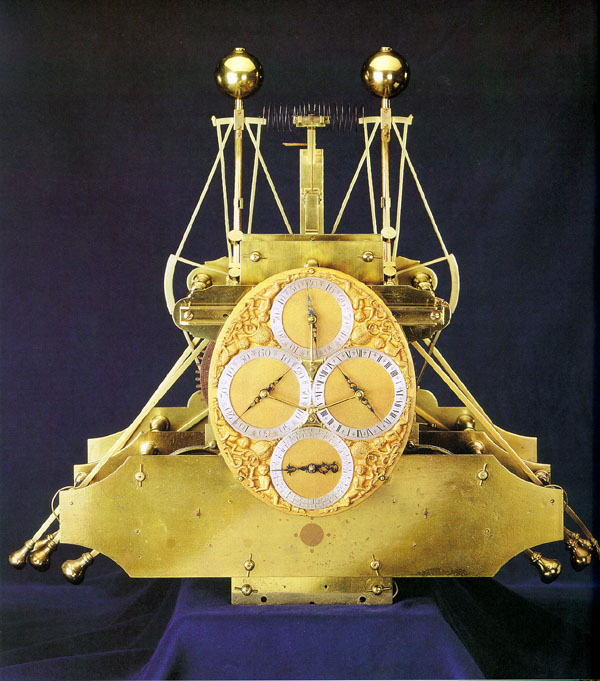
H1: weight = 75 lbs; size = 4 ft × 4 ft × 4 ft |
| 1736 | H1 sent on trial run to Lisbon |
| 1737 | Commissioners of the Board of Longitude meet for the first time
|
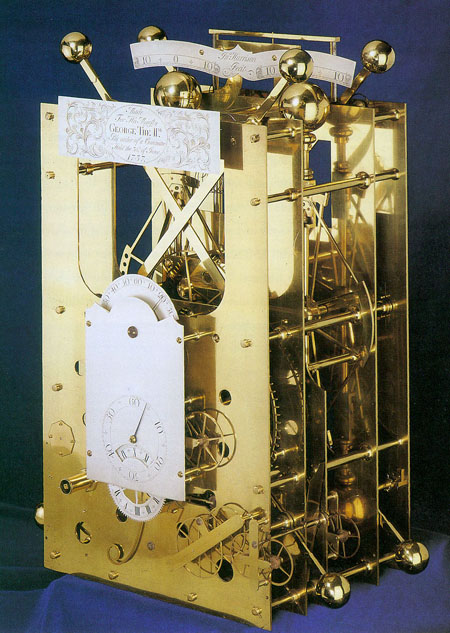
H2
|
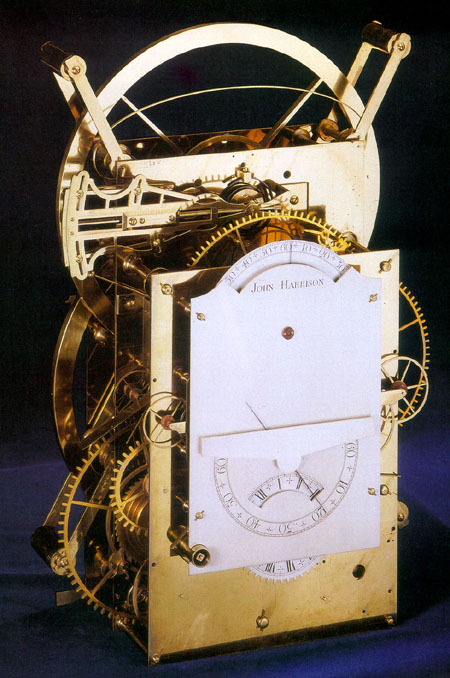
H3
|
| 1739 | H2 completed; bigger and heavier than H1; never tested at sea |
| 1740 | Harrison started work on H3; would take 17 years to complete and was not much smaller or lighter than H1 and H2; never tested at sea |
| 1742 | death of Edmund Halley; James Bradley (1693-1762) appointed third Astronomer Royal |
| 1749 | Harrison was awarded the Royal Society's prestigious Copley medal |
| 1757 | most of the work on H3 completed |
| 1769 | H4 completed; it was this smaller, lighter chronometer that won Harrison the Longitude Prize 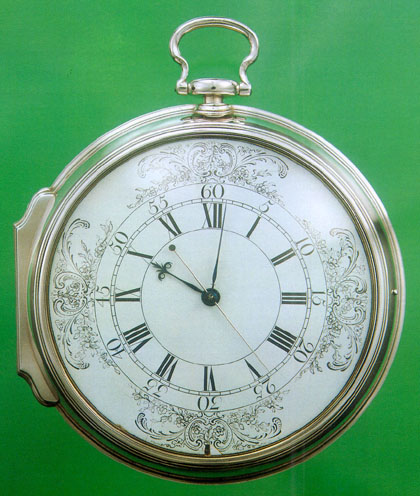
H4 weight = 3 lbs size = 5 in. diameter |
1761 to 1762 |
first voyage to test H4 made to Jamaica on the Deptford
by determining their position at sea using H4, the crew of the Deptford was able to correct the ship's course and avoid delays that would have resulted if they had relied solely on estimates based on traditional methods |
| 1763 | Nevil Maskelyne (1732-1811) published the first Mariner's Guide |
| 1764 | second voyage to test H4 made to Barbados on the Tartar (return to England on the New Elizabeth). |
| 1765 | Maskelyne appointed fifth Astronomer Royal
H4 examined by committee appointed by Board of Longitude Harrison awarded half of longitude prize money!! Board orders Harrison to turn over--
|
| 1766 | Harrison ordered to turn over H1, H2, and H3
H1 is dropped and damaged in transit |
| 1767 | English watchmaker, Larcum Kendall (1721-1795), was asked to make a copy of H4
Harrison began work on H5, an improved version of H4 |
| 1770 | Kendall completed H4 copy called K1
|
| 1772 | Harrison wrote to King George III |
| 1773 | Harrison given £8,750 by special act of parliament |
| 1774 | new act of parliament set out terms for winning the prize; all entries
must:
|
| 1776 | death of John Harrison |
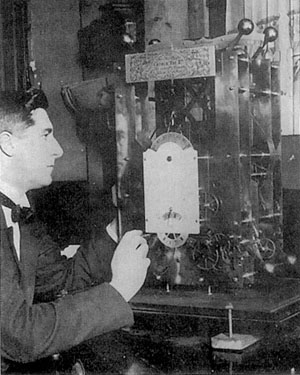
Rupert T. Gould (1890-1948) and H2.
Gould discovered H1 in 1920 and spent 13 years restoring
all the Harrison clocks to their original condition.
|